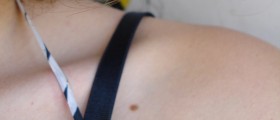
What is seborrheickeratosis and why does it occur?
Seborrheic keratosis is a medical term that refers to theskin growths that tend to appear in older people. These growths are eitherbrown or black, though they may even be pale. As for the parts of the body inwhich they may occur, the most preferable locations are face, back, and chest,and, even though they may look like a skin cancer, the fact is that they arenoncancerous. There are various types of seborrheic keratosis, but the general symptomsare common for all of them, or at least for the majority. Causes for thiscondition have not been identified, but since it is not uncommon that the peoplewho have it also have family members with this problem, it is believed thatgenetics probably has something to do with the causes.
Can seborrheickeratosis be treated and how?
When it comes to the treatment of this condition, itcertainly is possible, but the fact is that it is not necessary. Surely, peoplemay want to remove it because it can become irritated or it can even bleed whenrubbing the cloths against it, while some people simply want to remove it forcosmetic reasons. In some cases, there are medical reasons for removal, likefor example, when there is intensive itching, inflammation or infection, and only insuch cases the insurance companies pay for the procedure. The methods thatcan be used for the removal of seborrheic keratosis include cryosurgery, electrocautery,and curettage.
Cryosurgery is another name for the process in which liquidnitrogen is used for their removal by freezing them, but it is good to know thatlarge and thick growths usually cannot be removed this way.Curettage may help in such cases, and it consists ofscraping the surface of the skin with a special instrument.Electrocautery is a procedure that can leave visible scarsin case when it is not performed in the right way, and it can be used alongwith the previously mentioned procedure.Still, before the treatment, it is necessary to set theright diagnosis, and it is important to bear in mind that this condition may sometimesbe misdiagnosed with some other skin conditions, such as nodular melanomas, lentigomaligna, and even epidermal nevi, or condylomas and wart, which is why in somecases, a skin biopsy is highly recommended before setting the final diagnosis.

















Your thoughts on this
Loading...